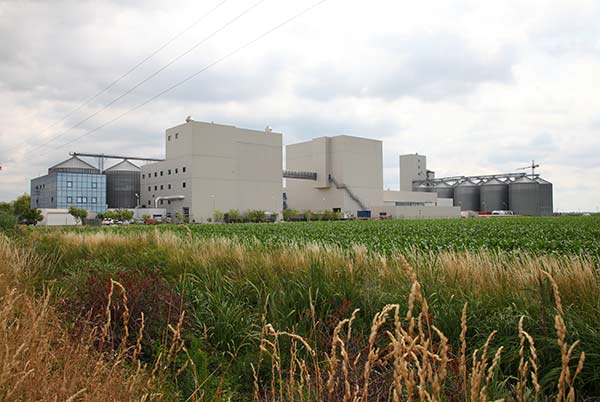
Beating the High Cost of Gluten Free
It is a fact of life many of us have faced: gluten-free food typically costs more than “regular” food. In the fall of 2008, the Canadian Journal of Dietetic Practice and Research published the findings of a study by Dalhousie University Medical School designed to assess the differences in the cost of gluten-free foods compared to their gluten-filled counterparts. The study confirmed what we on a gluten-free diet already knew. It costs more. How much more? According to the study, gluten-free foods on average cost a whopping 23% more!
Of course, there are more gluten-free options available now in 2012. Rising awareness of celiac disease and gluten sensitivities combined with growing consumer demand is responsible for astonishing growth in gluten-free consumer products. According to Packaged Facts, a leading publisher of market research in the food, beverage, consumer packaged goods, and demographic sectors, it is projected that U.S. Sales of gluten-free foods and beverages will exceed $5 billion by the year 2015.
While we may be encouraged by the wide variety of gluten-free foods previously unavailable, have the costs come down in relation to the increase of product availability and competition? A little. But certainly not in comparison to rising demand. In my own nonscientific research conducted in my local grocery store, I found that only Chex brand cereals, Kellogg’s Rice Krispies, and Sam Mills’ pastas were the same price whether gluten-free or not.
A few extra pennies (or in some case dollars) may seem like a fair price to pay for the peace of mind of enjoying safe gluten-free pastas, cereals, breakfast bars, cookies, and snacks. But with so many families struggling to keep up with the high cost of gluten-free, we have to wonder if this situation will ever change for the better.
To answer that first question, first we need to understand why gluten-free food costs more. Is it really just a way fro companies to profit off the misfortune of others? No, I’m convinced that is not it. There are hard, cold realities that can be attributed to the extra cost.
Most companies that produce gluten-free foods have to go through several steps to ensure the food they manufacture is in fact gluten-free. This involves sourcing raw materials, storing and dealing with them in such a manner as to eliminate contamination, milling the raw materials in either dedicated gluten-free facilities or having the facilities go through an extensive cleaning process with each “batch,” testing and blending the materials while again avoiding cross contamination, and proper storage until the product is finally packaged. Every step of this process adds time, labor, and expense.
If this is the case, then why are General Mills, Kellogg’s, and Sam Mills able to produce gluten-free products at the same cost as no-gluten-free foods? The answer lies in the fact that they all have large scale, high volume facilities and they own their mills and other facilities. They also produce and sell a lot of product! High volume equates to lower prices.
So why don’t all companies just build their own mills? It’s expensive! The largest and most technologically advanced gluten-free corn mill belongs to Sam Mills, a Romanian company in Satu-Mare. This state of the art mill was built at a cost of over $60 million.
I was fortunate enough to speak with Henry Leighton, C.E.O. of North American operations for Sam Mills U.S.A. He shed a little light on the subject. The mill produces 500 tons of milled gluten-free corn a day. That translates to 350 million pounds a year, more than any mill in Europe. Coupled with the mills is a pasta plant where the company creates their gluten-free pastas. The high volume mill, strong distribution network, and close proximity of the mill and pasta plant all add up to savings for the consumer at the grocery store checkout counter. For example, the price of Sam Mills’ “Pasta d’oro,” is about the same cost of Italian, wheat-based, imported pasta, equating to a little more than a store brand but roughly less than half the price of other gluten-free pastas. Sam Mills also practices private labeling of gluten-free products for some of the largest grocery store chains in the United States, which is even better news. Typically a grocery chain will sell its own store brand for much less money than other store brands.
Relatively new to the American market place, Sam Mills sells various shapes of gluten-free pasta as well as gluten-free dinner kits, grits, and polenta. According to Leighton, all of Sam Mills’ pastas and other products are under 5 gluten parts per million (ppm) – well under the current American standard of 20 ppm for a product to be considered gluten-free.
All of Sam Mills’ products are made with corn. Due to proprietary manufacturing processes, the corn products are not gritty, grainy or mushy and the pasta can actually be cooked al dente (firm to the bite) very much like Italian Semolina pasta. The products are free of dairy, eggs, sugar, yeast, soy, sodium, and nuts. They are naturally free of cholesterol and have a low glycemic index.
For many, it is impossible to think of corn without thinking GMO (genetically modified organisms). I voiced my concern to Mr. Leighton and he told me all of Sam Mills’ products are GMO-free. When asked to explain, he said, “It is simple. Romania, like most of Europe, is opposed to GMOs and in fact it is illegal to commercially grow GMO corn in Romania and Hungary. Illegal and strictly enforced.”
Sam Mills is not satisfied with lowering the cost of gluten-free
Pasta and dinner kits. Starting in 2013, they will be introducing a line of gluten-free granola, granola bars, and cookies to the American market and later that year plan to introduce snack products and pasta sides, all at significantly lower prices than what is now considered “normal” for gluten-free.
Mr. Leighton told me that Sam Mills is committed to producing the highest quality gluten-free products at affordable prices. Their motto and mission statement are one and the same. “Always Affordable, Always Delicious, Always Gluten-Free.”
Obviously, all companies that produce gluten-free products are not able to own their mills and facilities like Sam Mills, General Mills, and Kellogg’s. But with lower priced gluten-free foods entering the market place, and as other companies come up with their own strategies to stay competitive, eventually we, the consumers, should start to notice the difference in the prices at the grocery store.



